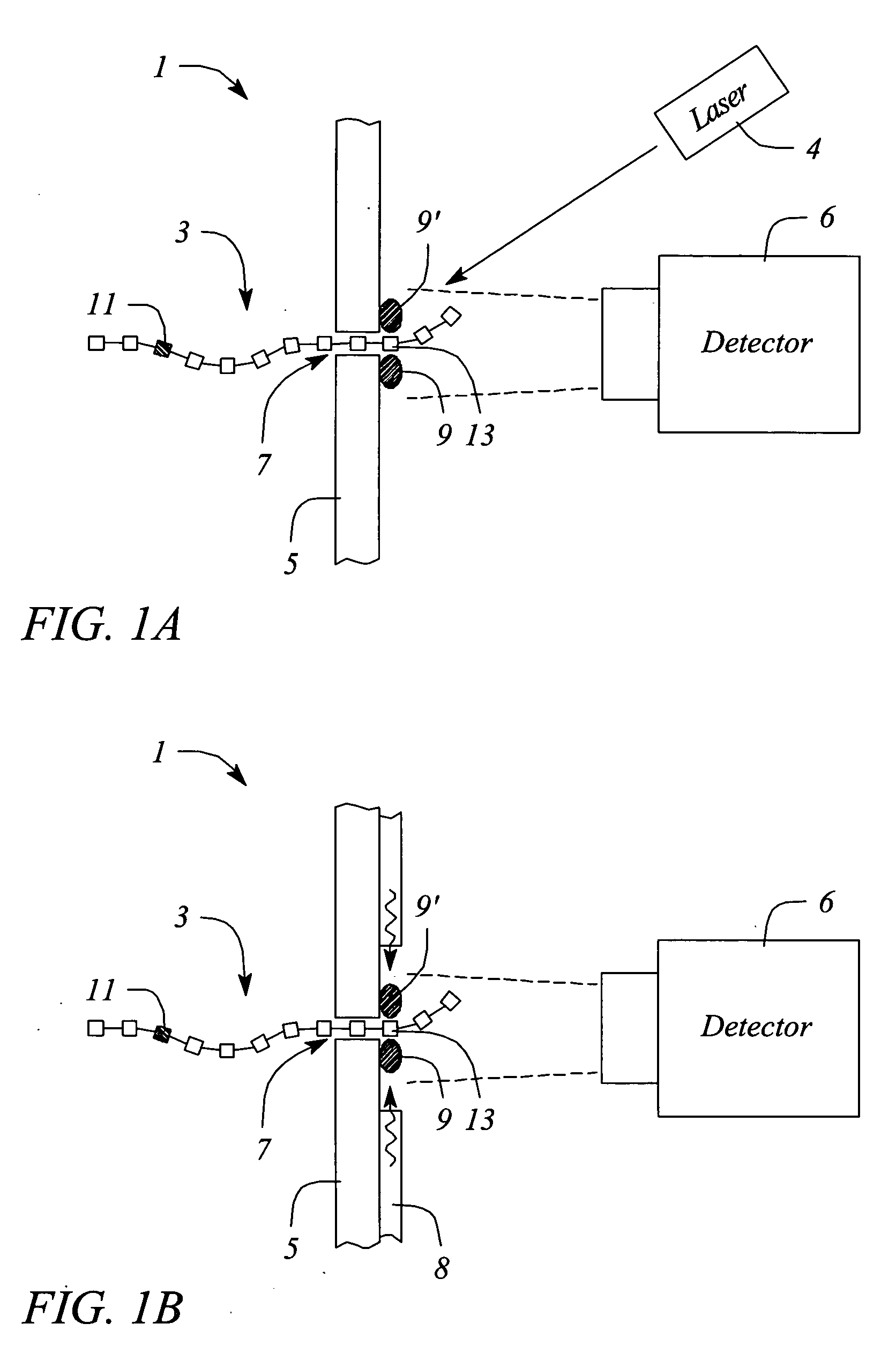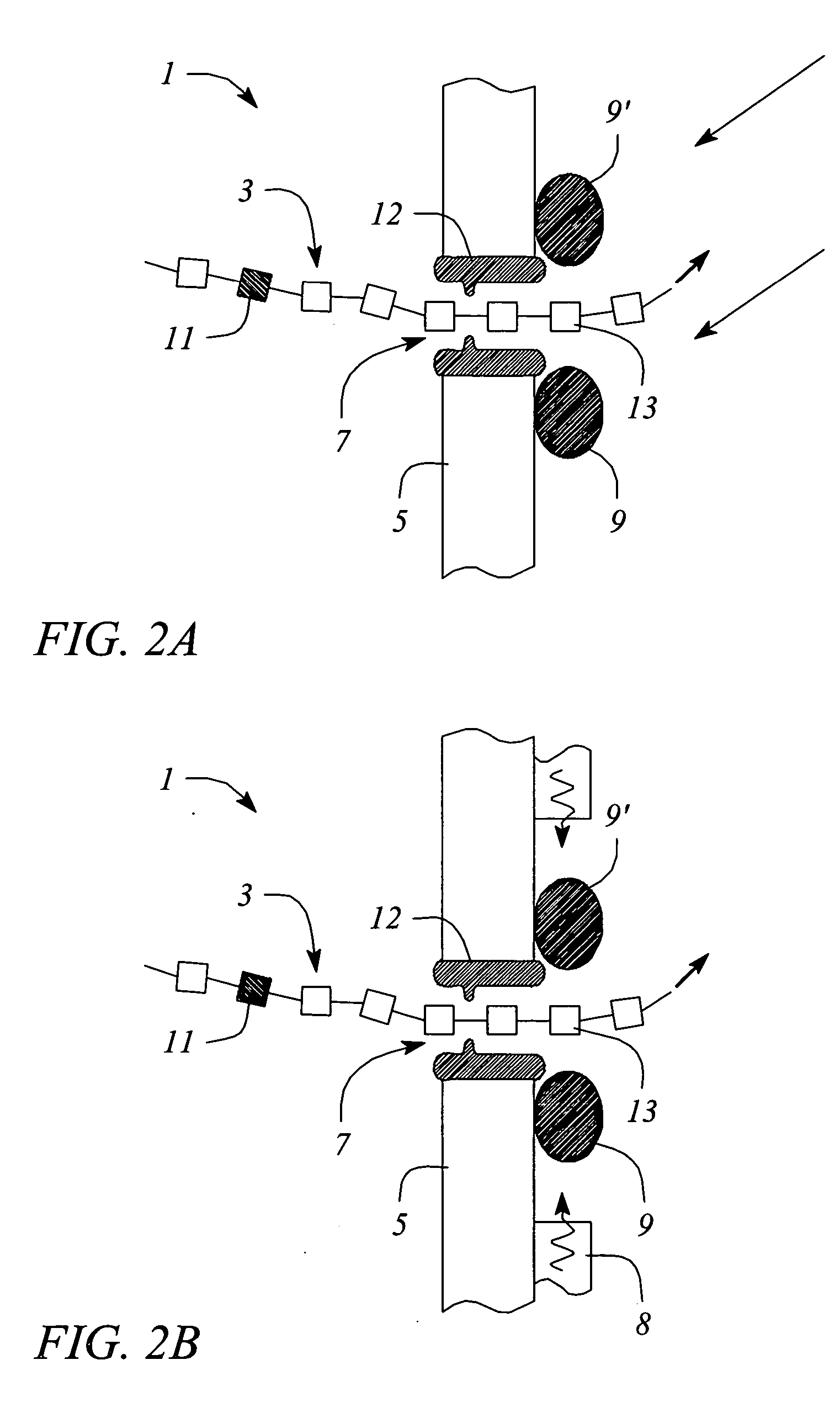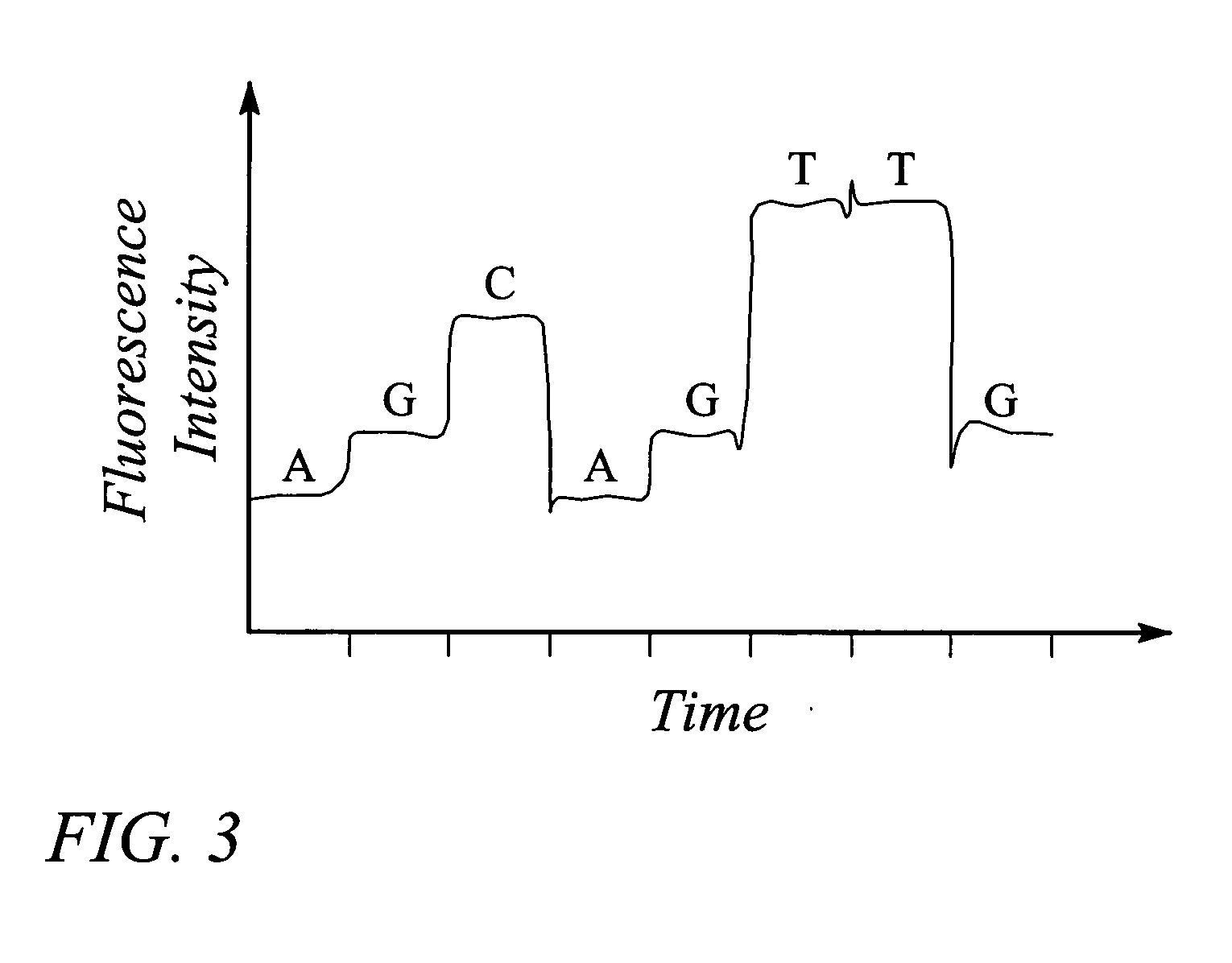Detection and identification of biopolymers using fluorescence quenching
a technology of biopolymer and quenching, applied in the field of biopolymer, can solve the problems of difficult or impossible to obtain information on the individual monomers of the biopolymer, and it is difficult to expect this simple tunneling configuration to provide the specificity required for biopolymer sequencing
- Summary
- Abstract
- Description
- Claims
- Application Information
AI Technical Summary
Problems solved by technology
Method used
Image
Examples
Embodiment Construction
[0019] This invention is not limited to specific compositions, methods, steps, or equipment, as such may vary. The terminology used herein is for the purpose of describing particular embodiments only, and is not intended to be limiting. Methods recited herein may be carried out in any order of the recited events that is logically possible, as well as the recited order of events. Furthermore, where a range of values is provided, it is understood that every intervening value, between the first and second limit of that range and any other stated or intervening value in that stated range is encompassed within the invention. Also, it is contemplated that any optional feature of the inventive variations described may be set forth and claimed independently, or in combination with any one or more of the features described herein.
[0020] Unless defined otherwise below, all technical and scientific terms used herein have the same meaning as commonly understood by one of ordinary skill in the ...
PUM
| Property | Measurement | Unit |
|---|---|---|
| Diameter | aaaaa | aaaaa |
| Diameter | aaaaa | aaaaa |
| Structure | aaaaa | aaaaa |
Abstract
Description
Claims
Application Information
 Login to View More
Login to View More - R&D
- Intellectual Property
- Life Sciences
- Materials
- Tech Scout
- Unparalleled Data Quality
- Higher Quality Content
- 60% Fewer Hallucinations
Browse by: Latest US Patents, China's latest patents, Technical Efficacy Thesaurus, Application Domain, Technology Topic, Popular Technical Reports.
© 2025 PatSnap. All rights reserved.Legal|Privacy policy|Modern Slavery Act Transparency Statement|Sitemap|About US| Contact US: help@patsnap.com



